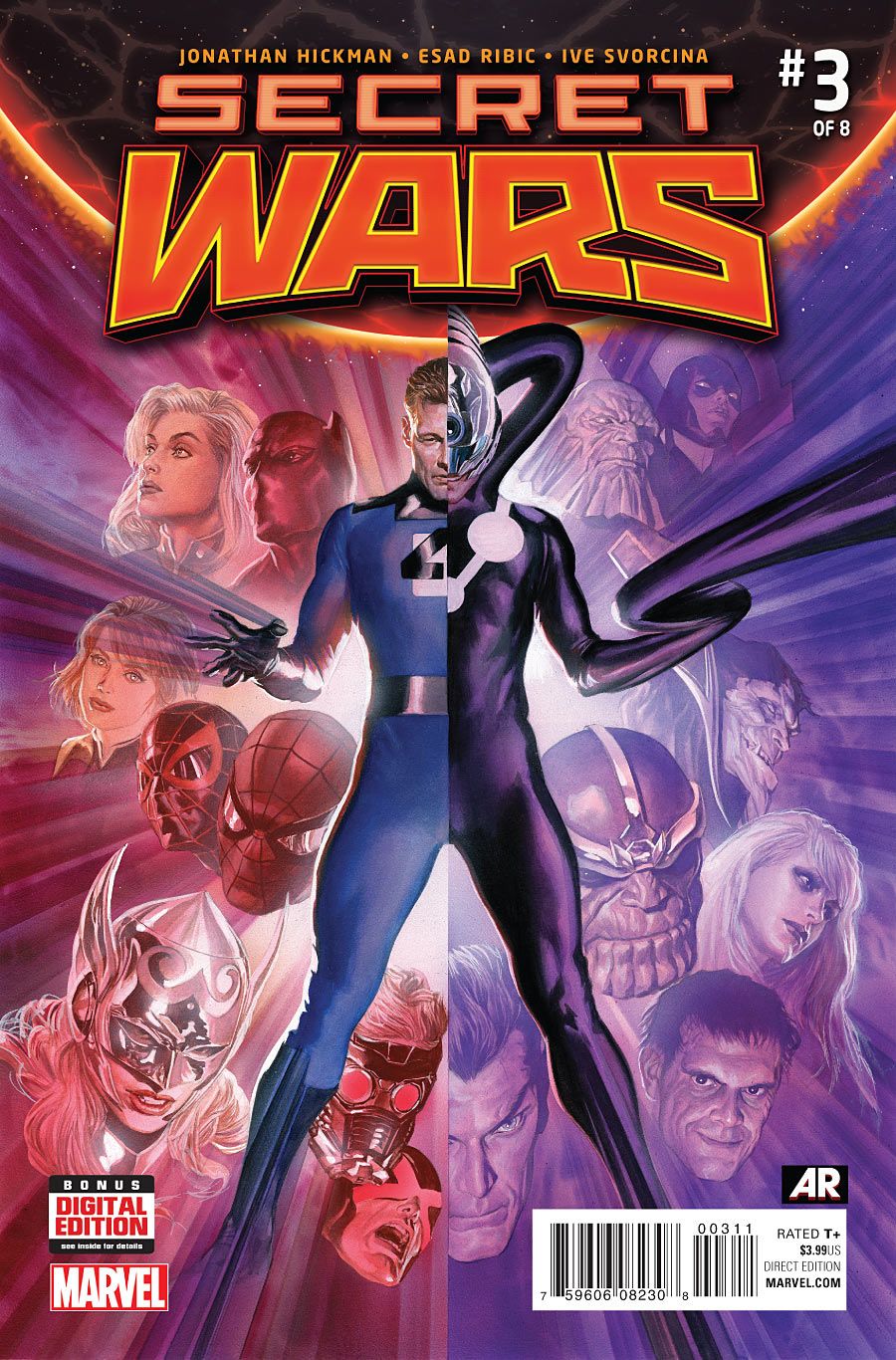Three issues deep, "Secret Wars" still bucks the Big Event trend with an impactful, creative story. Jonathan Hickman's involved saga and Esad Ribic and Ive Svorcina's dramatic panels offer up a new reality for the Marvel Universe that's as over-the-top as summer events get. Luckily, the pacing and character work match the imaginative premise. After issue #2 immersed the reader in the Battleworld, this issue gets the plot moving and starts to provide answers. "Secret Wars" is off to a very strong start; here's hoping it keeps its momentum.
What I'm most enjoying about "Secret Wars" is its twist on "the end of the world." This apocalypse isn't simple, outright destruction, which we've seen plenty of, but transformation beyond recognition. It's an arguably more devastating brand of world-death, and it also frees the creative team to play with radically different realities. Hickman draws on his great sense of Doom as a character to make the most of this premise; not only is Doom's dialogue unique and effective, but "Secret Wars" also imagines what this character's ideal world would really look like. Spoiler: there's a lot of technology, and a lot of feudalism.
That said, this is certainly a wordy book. The panels are thick with dialogue, and the characters almost always precede the specifics of their conversation with universal axioms. For instance, Doom's confession is prefaced by "Truth is always the sharpest blade," and Strange refers to a new problem as "the unknown becoming known." Letterer Chris Eliopoulos handles this pretty magnificently and, with fewer Thors around, the kerning of the Asgardian font gets pleasingly looser than last issue. The wordiness is also mitigated by the issue's pacing. Just as the elevated language starts to wear, the survivors show up, and their pointed questions and abruptness immediately freshen up the story. Issue #2 provided plenty of time for the new world to sink in, so it was time for this issue to focus on the characters and concrete answers -- and it does so.
Ribic and Svorcina paint a theatrical world, using dramatic lighting and blockbuster framing to convey the scale of Doom's future-feudal kingdom. When the Thors are in flight or the characters stride past wrecked ships, the scenes look powerful and magnificent. Ribic also breaks up these larger images with unexpected elements. For example, when the story transitions to the Cabal's hideout, the first panel is a small close-up of what they're cooking in the fire. For his part, Svorcina makes excellent use of light and shade in the outdoor scenes, giving the panels depth and roundness, but he's a touch uneven when things move indoors at Agamotto.
While Ribic's eye for scale and Svorcina's eye for light are put to good use, this is a more intimate issue than its predecessor, and Ribic struggles with some of the character faces. Sue has a very narrow range of expressions, and Reed's look of agony is closer to rolling his eyes. The larger scenes and more intense expressions land much better than the small ones.
"Secret Wars" is off to an undeniably strong start, but we've seen that with Marvel events before. As its cast and plot expand, I hope it will keep tight track of its central threads. "Secret Wars" shows a great grasp of pacing and character in this issue and, if that continues, this will be a memorable event.

